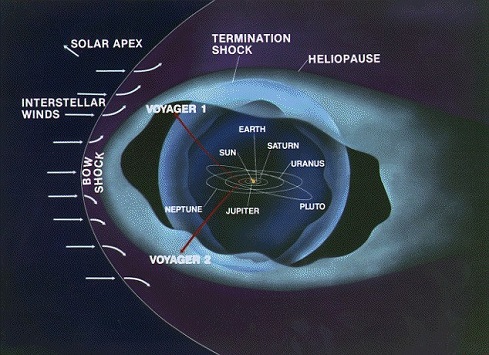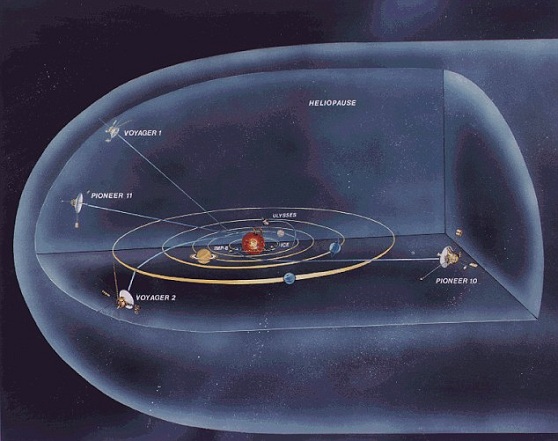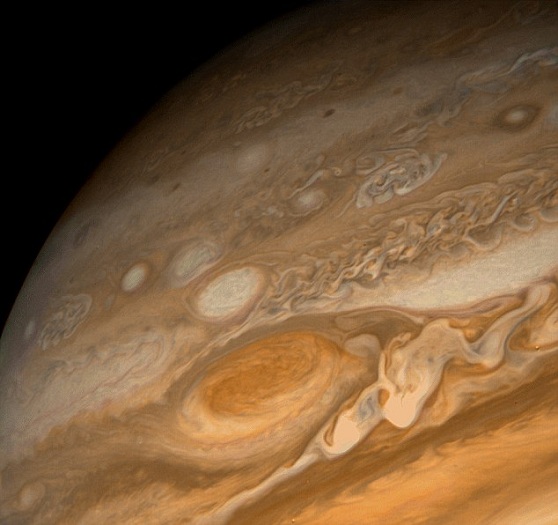More than three decades after launching, NASA’s workhorse spacecraft is inching closer to leaving the solar system behind.
Currently 11 billion miles away from the sun, Voyager 1 has been exploring the fringes of the solar system since 2004.
On Monday, the spacecraft entered a new region, known as the ‘stagnation zone’ – an area close to the very edge of our solar system, affording the first-ever ‘alien’s eye’ view of our planet.

Nasa’s Voyager spacecraft is reaching the outer limits of the solar system – an area known as the ‘stagnation’ zone
Voyager 1 still has a little way to go before it completely exits the solar system and becomes the first manmade probe to cross into interstellar space, or the vast space between stars.
The spacecraft has enough battery power to last until 2020, but scientists think it will reach interstellar space before that – in a matter of several months to years.
Chief scientist Ed Stone of the NASA Jet Propulsion Laboratory said the timing is unclear because no spacecraft has ever ventured this far.

The Voyager probe has been traveling towards the outer reaches of the solar system since 1977 – it has enough batteries to last until 2020, scientists estimate

For the past year, Voyager 1 used its instruments to explore the new region. It appeared to be the cosmic doldrums where solar winds streaming out from the sun at 1 million mph have dramatically eased
‘The journey continues,’ Stone told a meeting of the American Geophysical Union in San Francisco.
For the past year, Voyager 1 used its instruments to explore the new region.
It appeared to be the cosmic doldrums where solar winds streaming out from the sun at 1 million mph have dramatically eased and high-energy particles from outside are seeping in – a sign that Voyager 1 is at the doorstep of interstellar space.

The Voyager spacecraft were built to explore the outer planets of the solar system – and beyond
Scientists expect to see several telltale signs when Voyager 1 finally crosses the boundary including a change in the magnetic field direction and the type of wind. Interstellar wind is slower, colder and denser than solar wind.
Even with certain expectations, Stone warned that the milestone won’t be cut-and-dried.
‘We will be confused when it first happens,’ Stone said.

Voyager 1 and its twin, Voyager 2, were launched in 1977 to tour the outer planets including Jupiter, Saturn, Uranus and Neptune. After their main mission ended, both headed toward interstellar space in opposite directions. Voyager 2 is traveling slower than Voyager 1 and is currently 9 billion away miles from the sun.


